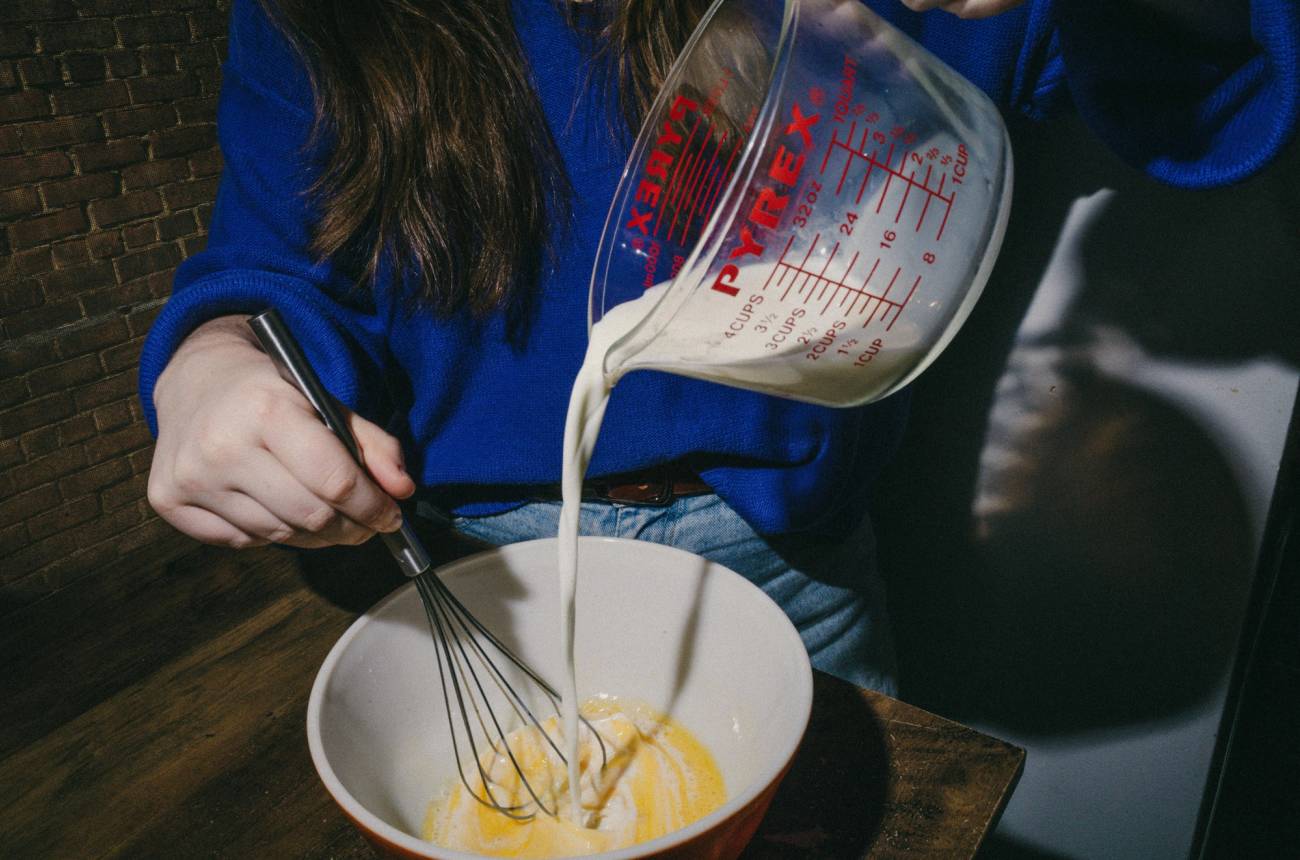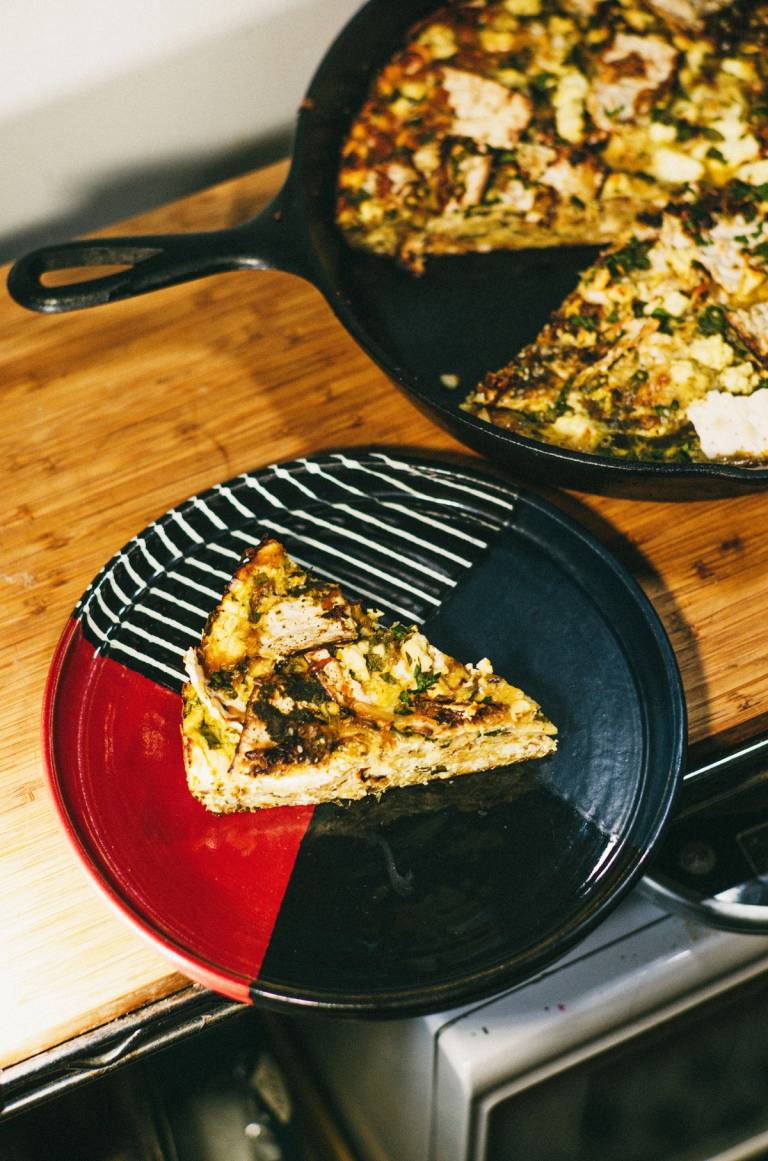When I converted to Judaism, I didn’t realize how much more I would have to cook. But when my first Rosh Hashanah rolled around about a month after my Beit Din, I suddenly found myself on the hook for hosting a 10-person dinner party (though this was admittedly my fault, having invited nine people over for the holiday dinner). That’s the thing about conversion: Since you don’t have Jewish family, you can’t plan on going to your parents’ or grandparents’ or cousins’ house for holidays. If you want to have a holiday meal, more than likely it’s going to be you cooking and hosting.
Without family recipes to fall back on, I was a bit lost on how to make these meals special. When there’s a million and one brisket recipes in the world, how do you pick just one? Wrestling with this, I started a miniseries on the Tablet podcast Unorthodox, called Cook Like a Jew. The concept was straightforward: I would have Jews in my orbit teach me their Jewish recipes, which would then become my own. It was a way to connect to my Judaism outside of shul and to engage in building my own Jewish community.
L’dor v’dor—“from generation to generation”—has been a tricky concept for me. For me, there is no literal l’dor; I am not genetically related to the generations of Jews that came before me. When I pray the Amidah, I always feel a little uncomfortable saying “eloheinu v’elohei avoteinu,” or “Our God and God of our ancestors,” because my God is not, in fact, the God of my ancestors. But cooking has been a way for me to feel connected to the web of Jewish ancestry. I don’t have my grandma’s brisket recipe, but I do have Alison Roman’s. I don’t have my dad’s challah recipe, but I do have Molly Yeh’s. In an essay for The New Yorker about her “cookbook crushes,” Norah Ephron (another intellectual ancestor of mine) writes: “I cooked every recipe in Michael Field’s book, and at least half the recipes in the first Julia [Child book], and as I cooked I had imaginary conversations with them both.” I read this essay years ago but still think about it regularly because Ephron, as per usual, strikes the nail on the head. It’s corny, but I really do feel like every cook or writer whose recipe I make is a sort of ancestor—if not literally, then culinarily.
For the first year or so after my conversion, I was devoted to my culinary ancestors, and felt bound to a sense that I wanted the food on my table to be “right.” Eventually, I started making little tweaks here and there, amplifying flavors I liked, diminishing or omitting those I wasn’t wild about. Now, almost two years in, I’ve started to develop my own recipes and to incorporate them into my own tablescape and ritual practice. I want to take my own place in my imaginary, culinary web of ancestors. I want to have recipes to pass down to my kids one day, and I want my kids to be able to say, “this is my mom’s recipe,” not “this is a recipe that my mom made.” This happened concurrently with a sort of relaxation I felt about my Judaism. While in the process of converting and in the months afterward, I felt a certain (internal) pressure to be the perfect Jew and “earn my place.” But I don’t want to be the perfect Jew anymore, and I don’t want to feel like my recipes are aspiring to be the “correct,” traditional version of a dish. I just want to be the Jew that I’m meant to be, and I want to make food that tastes good and feels like me.
That’s where my Passover strata comes in.
Similar to a savory bread pudding or a frittata, strata is traditionally made with stale bread and whatever breakfast meat, vegetables, or cheese you have lying around the fridge. I first encountered it at Cherbourg Bakery, a gluten-free bakery I once worked at in my hometown of Columbus, Ohio. Every time I go home (and often, multiple times in one trip), I visit Cherbourg for a piece of strata. Last year during Passover, I thought of it wistfully, as I thought of all things chametz.
Though almost all our holidays revolve around food in some way, I’ve found that I feel more spiritual during the holidays that require some sort of food abstinence, whether that’s fasting on Yom Kippur or not eating leavened bread during Passover. I’ve found Passover breakfasts to be particularly meaningful, because I find them to be very tough. On Passover mornings, when I have to face yet another day without toast, my irritation makes me feel closer to Hashem. “This bites, but I’m doing it for You, big guy,” I tell God as I gaze longingly at my toaster. A rabbi once told me she associates hard-boiled eggs with Passover since that’s what she always eats for breakfast. I tried that last year, and started gagging on day three of Passover eggs. Reminiscing about that hometown strata, I realized that I could Passover-ify it, and use matzo instead of bread. I did so, and a new Passover breakfast tradition was born.
My version of strata takes inspiration from the Seder plate, using parsley and leeks (not the lettuce traditionally used as karpas, but still a green vegetable!), along with feta and za’atar. You can assemble it the night before and put it straight in the oven in the morning, making it easy enough to contend with even when you’re crabby from lack of carbs. It’s great served with something a little acidic: a dollop of yogurt, fresh tomatoes, or a simply dressed green salad. It serves a crowd, but also lasts about a week in the fridge, perfect to turn to on mornings when you just can’t handle another boiled egg.
Quinn Waller is a podcast producer for Tablet Studios, and she also writes about food on her Substack, Wall Spaghetti.

